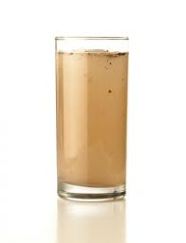The water you drink today has been around, in one form or another, for billions of years. While the amount of freshwater on the planet has remained fairly constant over time, the population has exploded. This means that every year competition for a clean, copious supply of water for drinking, cooking, bathing, and sustaining life intensifies. A growing population, changing weather patterns and water-borne diseases has led to a shortage of clean water.
Water scarcity may be an abstract concept to many but it is a stark reality for others. It is the result of a myriad of environmental, political, economic, and social forces. Nearly 70% of the world is covered by water, yet only 2.5% of it is fresh; the rest is saline and ocean-based. Just 1% of our freshwater is easily accessible, with much of it trapped in glaciers and snowfields. In essence, only 0.007% of the planet’s water is available to fuel and feed its 7 billion people. In much of the developing world, clean water is hard to come by, often requiring laborious work or significant currency to obtain. Often arsenic and other naturally occurring poisonous pollutants found in groundwater aquifers contaminate water supplies in addition to the toxic contaminants people discharge. Household water usually accounts for less than 5% of total water use. Most of the water humans’ use is for agriculture and industry.
Every day in rural communities and poor urban centres throughout sub-Saharan Africa, hundreds of millions suffer as they are forced to gather water from streams and ponds – full of water-borne disease that make them and their families sick.
According to WHO/UNICEF Joint Monitoring Programme for Water Supply and Sanitation (JMP) estimates, released in early 2013, 2.5 billion people lack improved sanitation facilities, and 768 million people still use unsafe drinking water sources. Inadequate access to safe water and sanitation services, coupled with poor hygiene practices, kills and sickens thousands of children every day, and leads to impoverishment and diminished opportunities for thousands more.
Poor sanitation, water and hygiene have many other serious repercussions. Children, particularly girls, often do not avail their right to education because their schools lack private and decent sanitation facilities. Poor farmers and wage earners are less productive due to illness, thus health systems are overwhelmed and national economies suffer.
Reality bites:
- 32 million people in Latin America and Caribbean, 345 million people in Africa, 196 million people in South, West, and Central Asia, 200 million people in Southeast, East Asia and Oceania and 10 million people in developed countries do not have access to water.
- 3.4 million people die each year from water related diseases.Most migrating to urban centers, move to informal settlements (i.e. slums) with no sanitation facilities.
- An American taking a five-minute shower uses more water than the average daily consumption of a person in a developing country slum.
- Diarrhea is the second leading cause of death among children under five in the world. Around 1.5 million deaths each year are caused by diarrhea. Half of the world’s hospital beds are occupied by patients suffering from diseases associated with lack of access to safe drinking water, inadequate sanitation and poor hygiene.
- Approximately 10% of the global disease burden could be reduced through improved water supply, sanitation, hygiene, and water resource management.
- Only 10% of waste water gets treated, the rest goes into our lakes, rivers and oceans.
This situation is no longer bearable. In a recent news article in Hindustan Times (http://www.hindustantimes.com/India-news/Delhi-Metro/Experts-slam-Jal-Board-s-water-testing-parametres/Article1-1084547.aspx.), water and health experts have raised doubts about Delhi Jal Board’s (DJB) claim of supplying pure water.
If you are still not satisfied, these links provide some shocking perspectives:
- http://www.youtube.com/watch?v=X5XX9EzwbWM; Source: Drop in the Bucket
- http://www.youtube.com/watch?v=8STrs78yxO0&feature=player_embedded#at=24; Source: TheWaterProject
And you thought ‘that’ water was clean! Well, think again. The situation is not getting any better. According to the World Water Vision Report, “There is a water crisis today. But the crisis is not about having too little water to satisfy our needs. It is a crisis of managing water so badly that billions of people – and the environment – suffer badly”. If you agree, feel free to comment.



thank you for sharing and thank you for following my blog!
Pleasure. Kindly go through our blog and feel free to comment.
Marvellous read!! Well we can blame the Americans for one more thing..taking a shower. This piece is a grim reminder of our limited resources, take it up as a personal issue and make it big at your most convenient place, your college. You have a ready audience here which may be unaware.. spread the awareness. You’ll be doing Mother Earth a big favour with a small initiative.
Waiting for the next post eagerly. Best Wishes!!
Not only Americans, but also Indians take a shower…at least those who have access to regular supply of water and a great deal of water is wasted in that.
Nice work Ghosh! Stating the facts (y)
Thank you. Please spread the word.
Reality check..great work Shreesti..(y)
ty 🙂
Nice work Shreesti… well researched article!
This is something which people need to understand and know the reality…rather then just putting up word ….and steps should be taken and have to be hard….overall great work Shreesti and keeps it up….hope to get something big from you now…thanks
the wait won’t be longer…cheers
Ignorance about real plights is much more harmful than anything. If people know more about there actual problems, they might work a bit more towards solving them.
True that Adaa! We can just pray and hope by spreading awareness to ignite the minds of still not awaken.
The same condition reaches beyond imagination in the inner African tribal and rural regions. A swiss company has innovated some instant cleaner for water. Check it out here. Thanks to Priyanka for sharing this blog.
http://www.vestergaard-frandsen.com/lifestraw